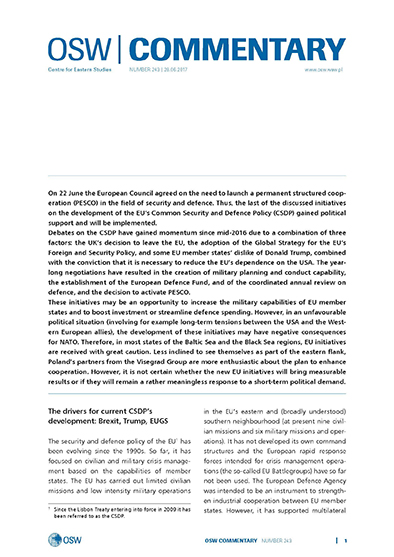Holes in the skies over NATO’s Central European member states
Holes in the skies over NATO’s Central European member states
Author(s): Andrzej Wilk
Subject(s): Security and defense, Military policy, Geopolitics, Peace and Conflict Studies
Published by: OSW Ośrodek Studiów Wschodnich im. Marka Karpia
Keywords: NATO; OTAN; Central Europe
Summary/Abstract: Over the past few months, four Central European states have made decisions which will determine the shape of their air forces over the next decade. On 11 October, Romania signed a contract under which it will buy twelve used US F-16A/B multi-role fighter aircraft from Portugal. In August, Slovakia signed contracts with Russia’s MiG for repairs and the limited modernisation of its twelve MiG-29 fighter aircraft currently in service. The Czech Republic entered into a preliminary agreement in July with Sweden on extending the lease of fourteen JAS-39 Gripen multi-role fighter aircraft (the new Czech government will hammer out the details following the parliamentary election). Bulgaria, which has been facing financial problems and political instability, in June postponed the purchase of new (non-Soviet) combat aircraft at least until the end of this year. If Sofia decides to buy any within the next few years, these will be not more than twelve relatively old and worn-out machines (most likely F-16A/B from Portuguese or Dutch army surplus). Given the fact that Hungary in 2012 made the same decision regarding its fourteen Gripen aircraft as the Czech Republic, there are good grounds to claim that the capabilities Central European NATO member states have to take action in airspace are durably limited.
Series: OSW Commentary
- Page Count: 7
- Publication Year: 2013
- Language: English
- Content File-PDF

